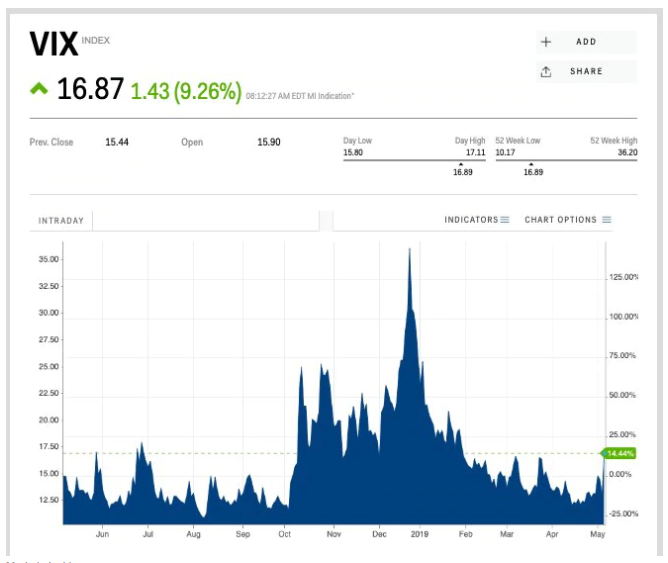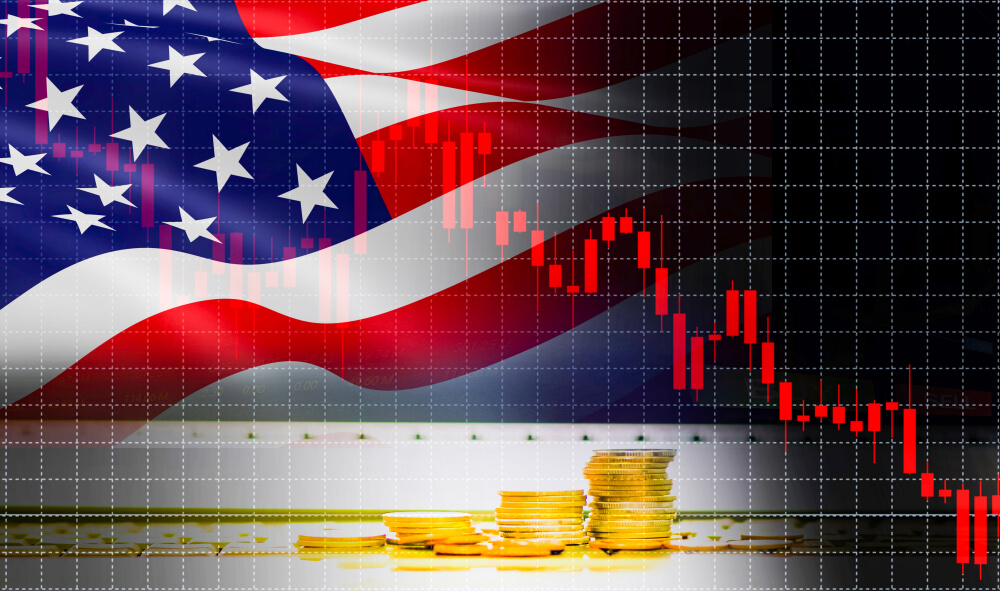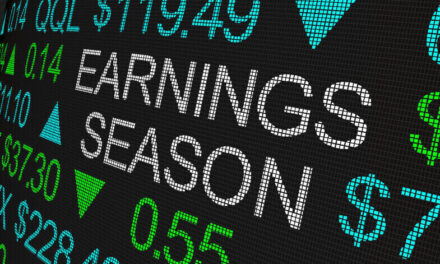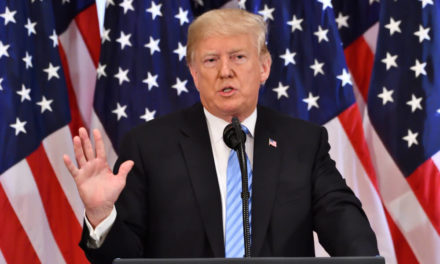After a months-long truce, President Donald Trump ratcheted up the trade war rhetoric Sunday and Monday, threatening to increase tariffs from 10% to 25% on $200 billion worth of Chinese goods, leading to a massive sell-off on the market that has investors wondering if they’re getting played.
“One cannot but sense that Mr. Trump is playing us a little,” Markets.com chief market analyst Neil Wilson told Markets Insider. “He may well be making a deal seem further away in order to make the achievement seem all the more impressive when it comes.”
On Sunday, Trump tweeted that the tariffs threatened in December would go up on Friday after China attempted to renegotiate things that had reportedly been settled.
“For 10 months, China has been paying Tariffs to the USA of 25% on 50 Billion Dollars of High Tech, and 10% on 200 Billion Dollars of other goods. These payments are partially responsible for our great economic results,” Trump tweeted. “The 10% will go up to 25% on Friday. 325 Billions Dollars of additional goods sent to us by China remain untaxed, but will be shortly, at a rate of 25%. The Tariffs paid to the USA have had little impact on product cost, mostly borne by China. The Trade Deal with China continues, but too slowly, as they attempt to renegotiate. No!”
….of additional goods sent to us by China remain untaxed, but will be shortly, at a rate of 25%. The Tariffs paid to the USA have had little impact on product cost, mostly borne by China. The Trade Deal with China continues, but too slowly, as they attempt to renegotiate. No!
— Donald J. Trump (@realDonaldTrump) May 5, 2019
He followed that up with another tweet Monday.
“The United States has been losing, for many years, 600 to 800 Billion Dollars a year on Trade. With China we lose 500 Billion Dollars. Sorry, we’re not going to be doing that anymore!” Trump said.
The United States has been losing, for many years, 600 to 800 Billion Dollars a year on Trade. With China we lose 500 Billion Dollars. Sorry, we’re not going to be doing that anymore!
— Donald J. Trump (@realDonaldTrump) May 6, 2019
Trump’s tweets effectively sent the fear gauge known as the VIX spiking 20% as world equity and oil markets slumped. Trump also said he might slap tariffs on an additional $325 billion worth of Chinese goods — basically everything Beijing imports to the U.S.

Trade Representative Robert Lighthizer said China isn’t holding up its end of the bargain.
“Over the course of the last week or so we have seen … an erosion in commitments by China,” Lighthizer told reporters. “That in our view is unacceptable.
“We’re not breaking off talks at this point. But for now, come Friday there will be tariffs in place.”
The markets however gained back some momentum in late trading on Monday after China said top trade negotiator will travel to the U.S. this week to continue talks, Bloomberg reports.
“The fact that China sends a delegation to the U.S. shows it is still willing to solve the dispute by negotiations regardless of what the U.S. is saying,” said Lu Xiang at the state-run Chinese Academy of Social Sciences in Beijing. “If the Trump administration follows through with the tariffs threats on Friday, I think it means the talks fall apart. We then need to be prepared for worse than worst.”
China reportedly sent through a new draft of an agreement that included some backsliding on on China’s part, altering the “deal very dramatically,” according to Treasury Secretary Steve Mnuchin, who said 90% of the deal had been finalized. Beijing then attempted to renegotiate matters that had already been finalized.
“We are not willing to go back on documents that have been negotiated in the past,” he said.
According to two people familiar with the U.S.’s position, China backtracked on committing to legal changes that American officials saw as key to selling the deal domestically as the biggest concession any U.S. administration has ever gotten from China.
This isn’t the first time an apparent agreement faltered. A year ago, Liu told reporters in Washington that talks with Mnuchin, Lighthizer and Secretary of Commerce Wilbur Ross ended with a pledge not to engage in a trade war.




